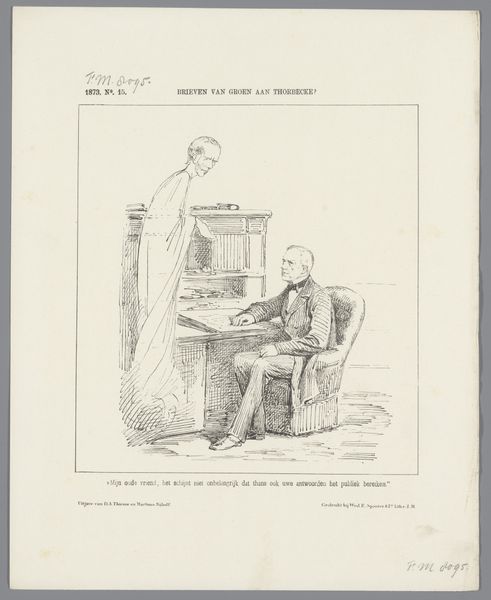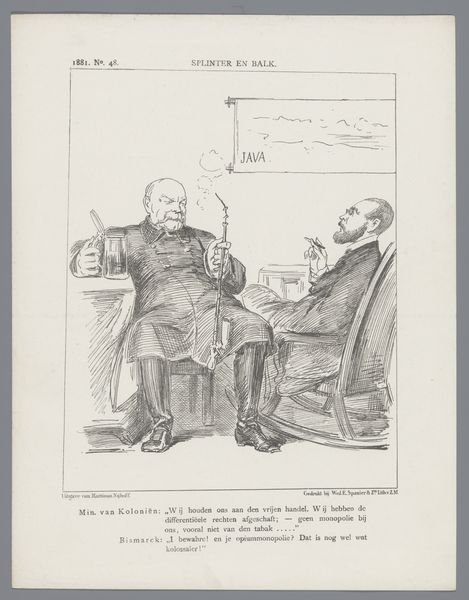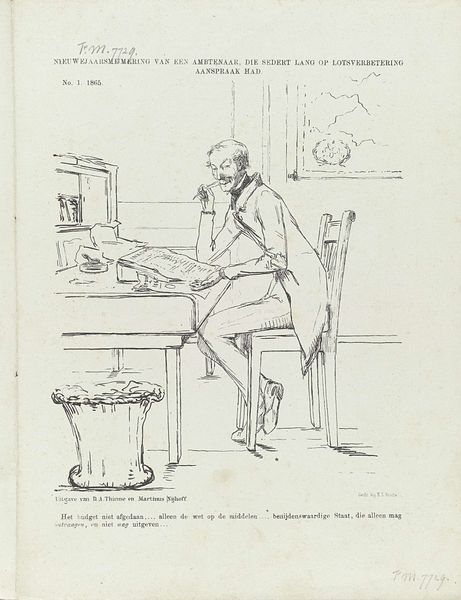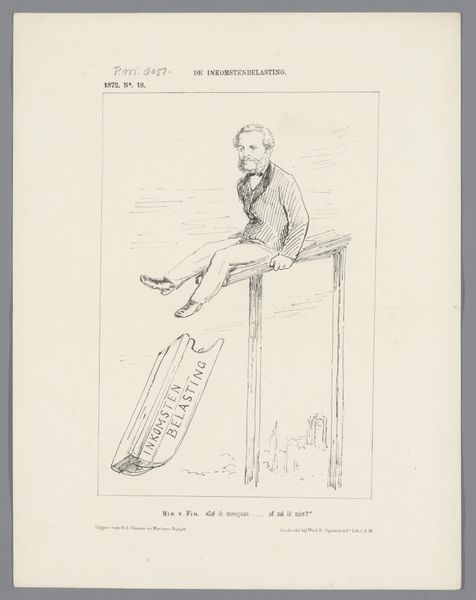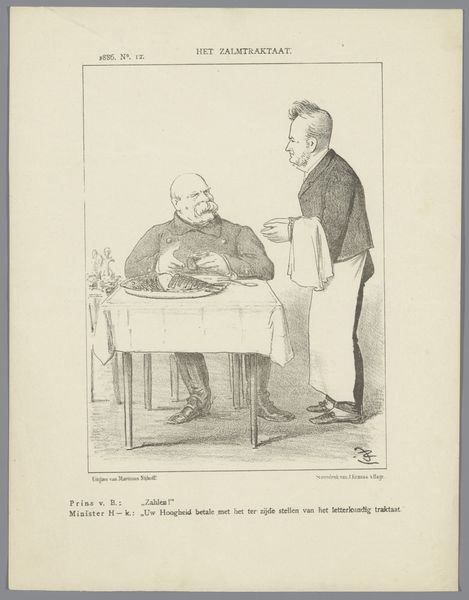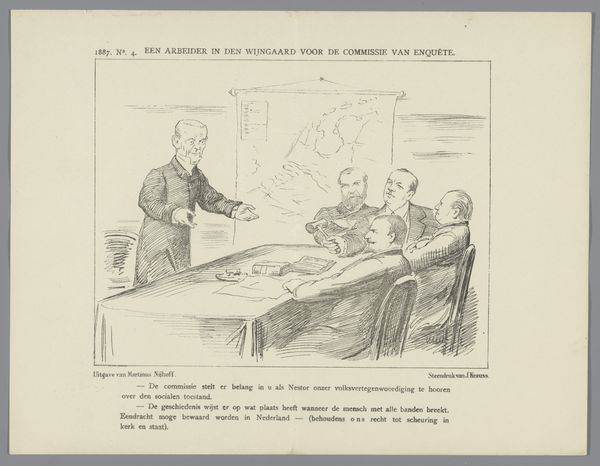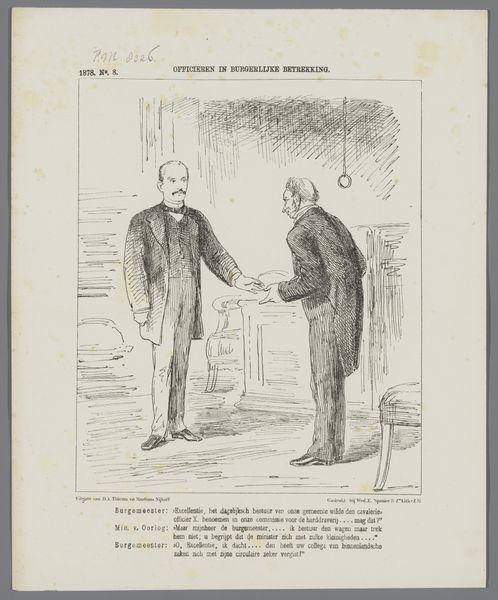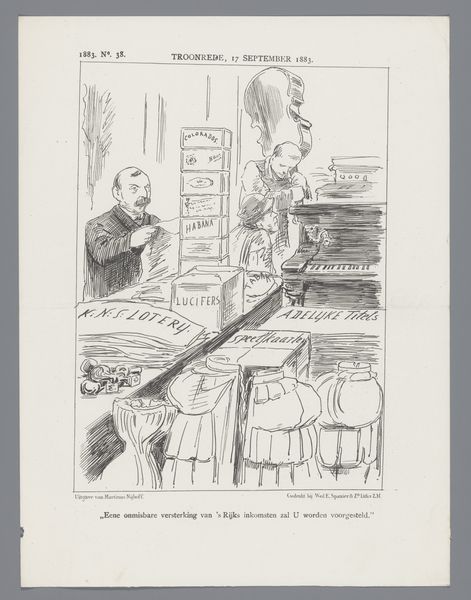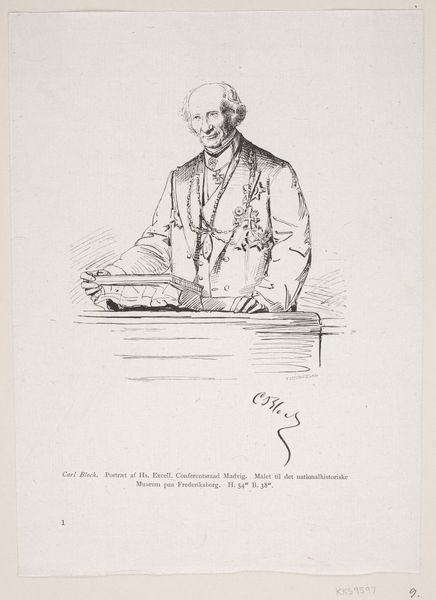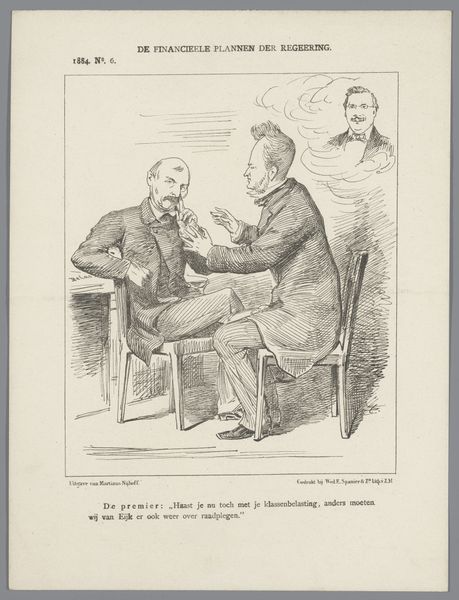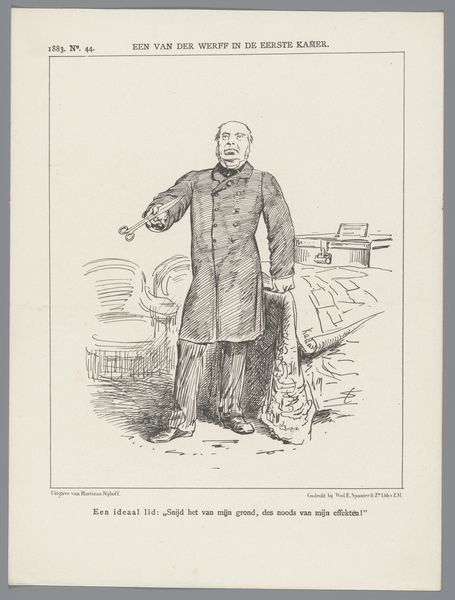
drawing, print, paper, ink
#
portrait
#
drawing
# print
#
caricature
#
paper
#
ink
#
genre-painting
Dimensions: height 275 mm, width 215 mm
Copyright: Rijks Museum: Open Domain
Curator: This is a political cartoon titled "Politieke spotprent over West-Indië, 1882," created by Johan Michaël Schmidt Crans in, as the title indicates, 1882. Editor: It has a distinctly cynical air. The figure seems complacent, almost smug, and the whole scene is rendered with a crisp, meticulous use of line. Curator: Precisely. Notice how the artist utilizes hatching to build form and volume. The figure's suit, for example, becomes less about portraying material than about the pure modulation of light and dark on its surface. There's also a keen sense of balance between the detailed figure and the spare background. Editor: From a material perspective, I'm interested in how this print would have been consumed. As a lithograph on paper with ink, it speaks to mass production and dissemination. The creation and circulation of such images are obviously a kind of material act with political implications. What kind of social critique do you think is at work? Curator: Well, we can infer critique from the man and the caricature of those in the pipe smoke as well as the Dutch text accompanying the work. The elements cohere into a visual statement about colonial power and its perceived effects. The formal structure allows the political point to be made efficiently and potently. Editor: Absolutely. And consider the labor involved: the drafting, the etching, the printing—a whole system dedicated to producing and circulating this visual message. Also note that "Westindische Tabak," or "West Indian Tobacco," is written at the top. Tobacco cultivation certainly has its own implications. Curator: Right, and let’s bring back the art historical lens. Notice how this relates to other contemporaneous caricature? One should evaluate it by comparison of subject matter. Editor: Of course, you are looking for artistic kinship whereas I view the object through labor. How these pieces of printed paper shape opinions and, ultimately, impact people and land is very compelling to me. Curator: It's a compelling drawing that succeeds through skillful composition and a controlled hand. The artist uses visual rhetoric, after all. Editor: And for me, seeing this political cartoon calls to mind questions about production, reception, and materiality to better contextualize.
Comments
No comments
Be the first to comment and join the conversation on the ultimate creative platform.
